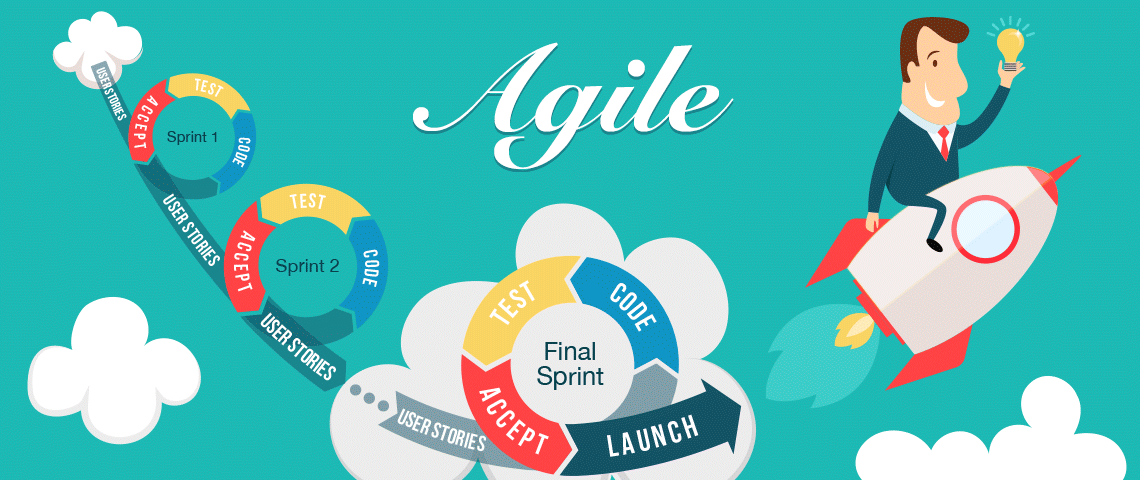In today’s fast-paced business surroundings, the concept involving work is starting a profound modification. Organizations are significantly recognizing the need to adapt to be able to a new where speed and flexibility are paramount, resulting in the rise of innovative workstyles that empower employees and enhance productivity. Embracing the agile trend is not merely a trend; this is a tactical shift that permits companies to reply to be able to challenges and possibilities with speed and even efficiency.

As we look into the nuances regarding agile and adaptable working, it's vital to understand how these kinds of approaches differ, however complement one another. This specific article serves since your ultimate lead to navigating this specific exciting evolution inside of the workplace. We will explore typically the top benefits associated with flexible working with regard to both employees and employers, provide insights on how to create an agile work environment that encourages collaboration and innovation, and promote practical points for implementing successful flexible working procedures. Join us on this journey to open the full prospective of a modern labor force that thrives about adaptability and durability.
Understanding Agile and Adaptable Workstyles
Agile and versatile workstyles represent an important change in how companies approach productivity plus employee engagement. Agile working concentrates on effort, adaptability, and iterative processes, enabling clubs to respond quickly to changing demands. Informative post focuses on clear communication, discussed goals, and the particular ability to revolves when necessary. In the mean time, flexible working permits employees to choose when and in which they work, fostering a feeling of trust plus autonomy that will lead to increased job satisfaction and gratification.
The particular distinction between souple and flexible workstyles is based on their primary principles and applications. Agile work is often project-based plus team-oriented, concentrating on gathering specific objectives by means of collaborative efforts. Found in contrast, flexible functioning prioritizes individual choices and schedules, letting employees to sense of balance work with particular commitments. While both approaches aim to be able to enhance productivity plus employee well-being, comprehending their differences is critical for agencies looking to apply them effectively.
Adopting agile and versatile workstyles calls for a cultural move within organizations, as traditional management practices may not line-up with these modern approaches. Leadership has a vital role in growing a setting that supports these workstyles simply by promoting open connection, continuous feedback, and even a results-oriented way of thinking. As businesses more and more recognize some great benefits of flexibility and flexibility, they need to also address the initial challenges each unit presents to create a successful and even sustainable work environment.
Implementing Adaptable Work Policies
Implementing adaptable work policies calls for a clear knowledge of both organizational targets and employee requirements. Begin by determining your team's present workflow, priorities, and overall culture to be able to identify the most effective flexibility options. Build relationships employees through surveys or discussions to assemble ideas about their preferences for remote work, flexible hours, or perhaps hybrid models. Participating with Additional info throughout this evaluation ensures that the plans you develop can resonate positively in addition to support productivity.
When you have set up a framework dependent on employee suggestions, it's vital in order to communicate these procedures transparently. Make certain all team members understand how adaptable arrangements work, which includes details on booking, communication expectations, plus available resources. Simply by providing clarity, an individual not only engender trust but likewise encourage an impression of ownership between employees regarding their own work styles.
Additionally, standard check-ins and suggestions loops can assist to refine flexible work policies more than time. Emphasize the importance of continuous improvement and adaptability in the process, allowing for alterations based on real-life experiences. This energetic approach will support you navigate challenges and leverage opportunities that arise along with flexible working, eventually creating a growing work place that benefits both employees plus the organization.
The effect involving Technology on Agile Working
Technology plays some sort of pivotal role inside facilitating agile doing work by enabling smooth communication and collaboration across diverse groups. With tools this kind of as video webinar, instant messaging, and even project management software, teams can work with each other effectively, no matter their physical location. This connectivity fosters some sort of culture of openness and responsiveness, enabling team members to be able to swiftly adapt in order to changes and address challenges as they will arise.
Moreover, technology supports flexible work agreements by providing employees with the sources they have to perform their particular tasks efficiently. Cloud-based solutions allow men and women to access data, documents, and applications from anywhere from any time. This accessibility not only enhances productivity yet also empowers workers to manage their particular work schedules in a new way that matches their personal in addition to professional lives, endorsing a proper work-life cash.
Eventually, technology is vital in monitoring plus measuring the success of snello working initiatives. Analytics and metrics from various tools enable organizations to evaluate staff performance, collaboration levels, and overall production. By leveraging this kind of data, leaders may identify areas regarding improvement create knowledgeable decisions to create an agile atmosphere that encourages continuous learning and growth, ultimately shaping a more dynamic and innovative workplace.
